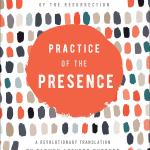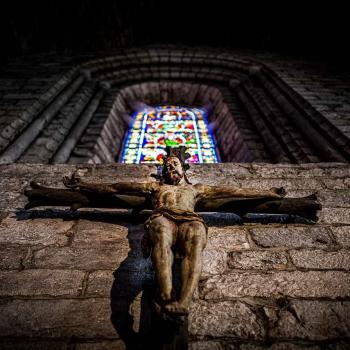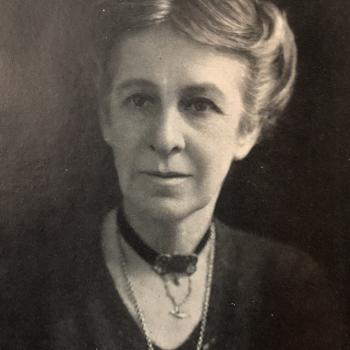Twice this week I have learned of the death of an acquaintance. I hesitate to say “friend” because neither of these people were friends in a close sense: one of them I hadn’t seen or been in contact with in almost four years, the other not since the mid-1990s. But they were both men I liked, and both I knew through church. One was a Jesuit priest at my parish from 2017-2018, the other the organist at Fran’s and my wedding, at the Episcopal Church we attended in the 1990s.
Fr. Rudy Casals, SJ was 47 years old, and died in his sleep a few days ago. About a month before that, organist Randolph S. James passed away peacefully (I don’t know the details). He had just turned 61.
Both of these guys were younger than me.
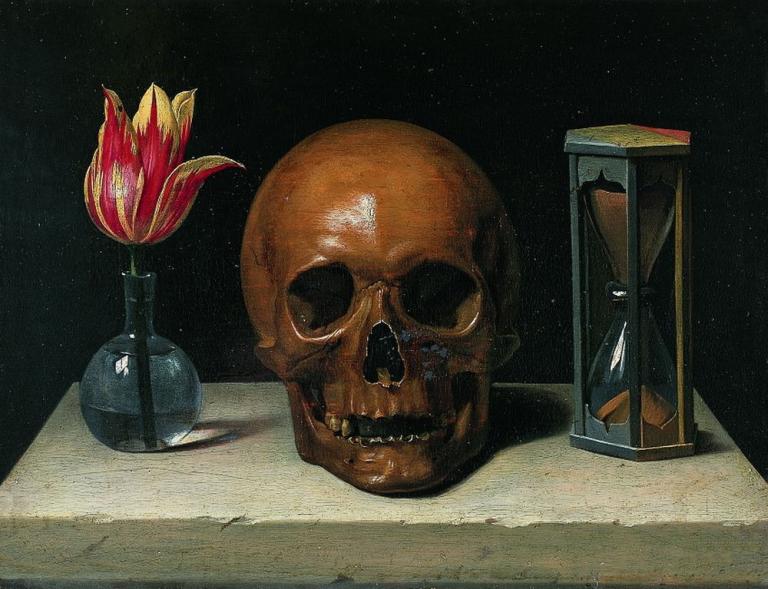
Remember, You Are Dust…
In her classic book Mysticism, Evelyn Underhill bragged that mystics tended to live long lives, noting that Hildegard of Bingen, Mechthild of Magdeburg, and John Ruysbroeck all lived into their eighties — no mean feat in the middle ages. We could add to her list St. Anthony the Great, who is said to have lived to 105, Thomas Keating who passed away at 94, and Ramon Panikkar who died at 91. But let’s be honest and acknowledge that other mystics died way too young: Thomas Merton died at 53, John of the Cross at 49, and Thérèse of Lisieux succumbed to tuberculosis when only 24. Underhill herself passed away at 65, only four years older than I am now. It is humbling to consider these things.
But having lost a friend who lived to be 101 (Fr. Luke Kot, a dear old Trappist monk who knew Thomas Merton), family members ranging in age from late 30s to early 90s, friends at various ages, and my daughter Rhiannon at 29, I’ve come to see that, no matter the cause, no matter how expected, every death feels like it comes too soon. I do not think this is a bad thing — on the contrary, bereavement and mourning are shaped by the depth of our love. And while I was hardly intimate friends with either Fr. Rudy or Randolph, both of them touched my life and both were people whom I genuinely liked. That, apparently, is enough for me to feel the pang of grief.
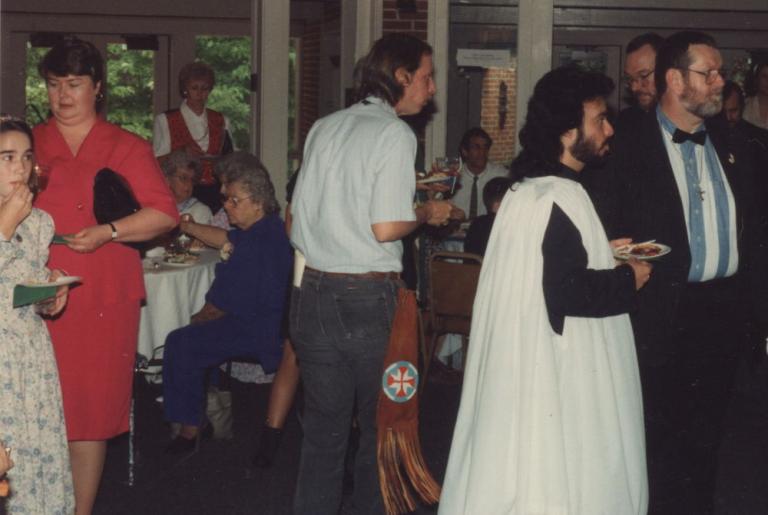
In his Rule for Monks, St. Benedict dourly proclaims “We must then be on guard against any base desire, because death is stationed near the gateway of pleasure.” (RSB 7:24) But beyond that, the great teacher of western monasticism makes few references to death in his rule, mostly quotations from scripture. It flies in the face of our popular image of gaunt, emaciated monks, decked out in hair shirts and given to self-flagellation, sleeping in coffins and keeping a skull on their desks to remind themselves always of their own eventual demise. Indeed, the concept of Memento Mori — be mindful of your mortality — became something of a trope in western art, as the image above (Philippe de Champaigne, Vanitas, c. 1671) and below (N. Johann Strixner, A Monk Contemplates a Skull at Candlelight, late 1500s/early 1600s) illustrate.
I suppose like most people, I’ve always rather thought the idea of meditating on a skull to be creepy if not downright macabre. An exercise like that seems to belong with extreme Calvinism and Jansenism, based on the rejection of life’s wonder and offering no real benefit to the person doing the meditating. But these days, I’ve become a bit less judgmental of this idea of memento mori. I’m not rushing to put a skull on my desk, mind you! But the older I get, the more death shows up in my life. When I shared the news of Randolph’s passing to Fran, just a couple days after reeling over the sudden death of Fr. Rudy, Fran simply said, “We will be dealing with this a lot in the years to come.” She’s right. I still remember talking on the phone with my mom when she and dad were in their 70s; it seemed like every time we talked, she was telling me of another friend or loved one who had died. Eventually, I noticed that didn’t happen as often, and I realized it was because my parents had lived long enough to get to the other side of the bell curve.
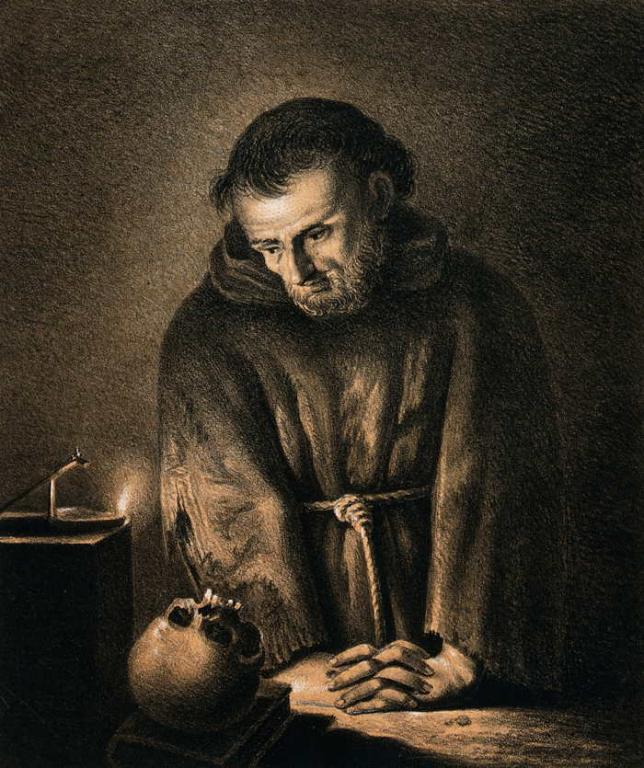
Where, O Death, is Your Sting?
When Rhiannon went into hospice, I read several books about death and dying, such as Final Gifts by Callanan and Kelly and Knocking on Heaven’s Door by Katy Butler. But the one that really made an impact on me was The Grace in Dying by Kathleen Dowling Singh. I can’t remember how I stumbled across that book, I thought it was mentioned in Final Gifts but that’s not the case. Somewhere, maybe online, I read a reference to Singh’s book that described it as a truly contemplative reflection on death and dying. That was all the encouragement I needed. I downloaded the book the week after Rhiannon went into hospice. When I opened it up, I encountered these words:
This book was not written to be read if death is very near—a few hours or a few days or a week away. If you are the one who is facing death this soon, put the book down. And know that you are safe. If your loved one is facing death this soon, put the book down. And know that your loved one will be safe.
At the time, we thought Rhiannon only had about three weeks — but since that was more than just a few hours or days, I kept on reading (she actually lived another seven months). Far and away, it is the best book on the dying process that I know of. Here’s just one of many treasures:
There appears to be a universal, sequential progression into deeper, subtler, and more enveloping dimensions of awareness, identity, and being as we begin to die—a movement from the periphery into the Center. Further, I realized that the transformation I was observing in people who were nearing death was the same psychoalchemy—in a greatly accelerated mode—that I had noticed in myself through two and a half decades of practicing contemplative disciplines and in the people with whom I had worked as a psychospiritual counselor.
In other words, a contemplative practice — like Centering Prayer, Christian meditation, or the Jesus Prayer — functions in the soul to create a process that mimics the experience of dying. When we place our attention in contemplative awareness, we are entering into the same vast, spacious, loving silence that will meet us all when we die. We do this not because it is morbid or macabre. We do this because, as Singh points out, it is safe. All of our moments spent in Centering Prayer or other types of silent meditation are gentle, kind “dress rehearsals” for the final act of every life: the exhalation of death, the consent our bodies will finally make to release our spirit into the silence of eternity.
To attend to the silence between and beneath your thoughts and feelings and mental images is to engage in memento mori — not a grisly obsession with death, but an open and spacious relaxation-into the truth that death is the completion of every life. When we think about this, we are caught up in our words — and the emotions they invoke, usually ego-driven feelings like anxiety or fear. “Words are the most powerful form of selective attention,” notes Kathleen Dowland Singh. Words are, by their very nature, dualistic: for they all signify something, dividing our attention into “this” and “not-that.” But beneath and beyond all our words is the vast haven of divine silence, and silence — which is not an absence, but a presence — does not rely on this dualistic machinations of discursive attention in order to be present to us. Silence, like God, simply is. In silence, we can rest, we are safe, we are invited into calm and peace. As great contemplatives down the ages have noted, we often bring our own lack-of-peace with us into the silence, often our sins and traumas and passions that need healing or at least need calming-down. Silence is a generous host and a compassionate healer, so when we allow silence to meet our inner frenzy, we are invited into a place of regeneration and renewal. I think we can trust that this dynamic, available to us every time we sit down for a few minutes of silent prayer, will be infinitely available to us when we consent to our death, and move out of time and into eternity.
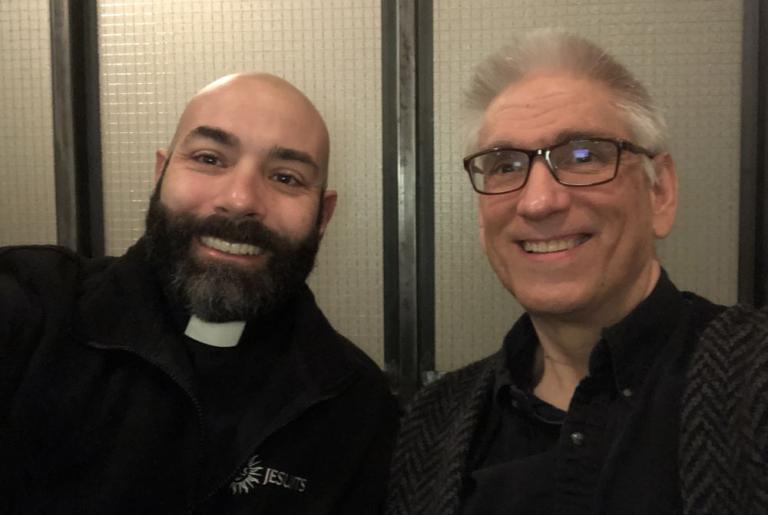
I’m heartbroken about Rudy’s death, so young and so full of life. And while I hadn’t seen Randolph in years, the fact that he and I were so close in age hits home as well. I’m sad for both losses, and I also trust the wisdom of our spiritual traditions that help us to see death not as an enemy, but truly as a gift. That’s cold comfort for those who grieve, and grief needs to be fully felt and lived through, for as I said, it is a dimension of love. And love, of course, is what makes life wonderful. A good death only makes sense in the context of a wondrous life. I know that Both Fr. Rudy and Randolph lived life well, and while I won’t attend either of their funerals, I know they will be packed with mourners and friends. Of course, the measure of a life well-lived isn’t just how many people are saddened by our passing. A person can die all alone at the end of a wonderful life. What matters, it seems to me, is always the present moment: here and now, to find whatever it is that makes life wonderful for us — to find it, and to immerse ourselves in it. I suspect love is always at the heart of a beautiful life, for love, after all, is how God is manifest in our lives. So we all need to make it a priority to calibrate our lives toward love.
With that in mind, I hope your life is filled with love, today and every day. If you are lonely, I pray that you may at least find the love of God in your heart, and find some way to express it. If nothing else, love yourself. Trust that love has been poured into your heart by the God who is Love. And then look for ways to pass it on. Love well, and live well, and your life will be wonderful. And take time for silence, silent meditation and/or silent prayer: for that is your best preparation for a lovely death at the culmination of your wonderful life.




